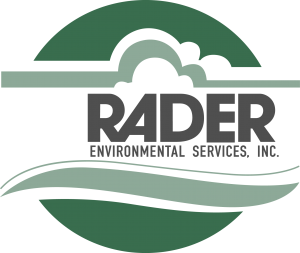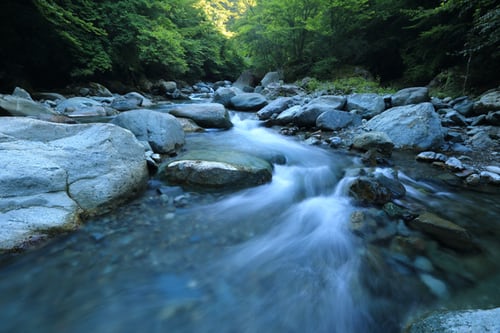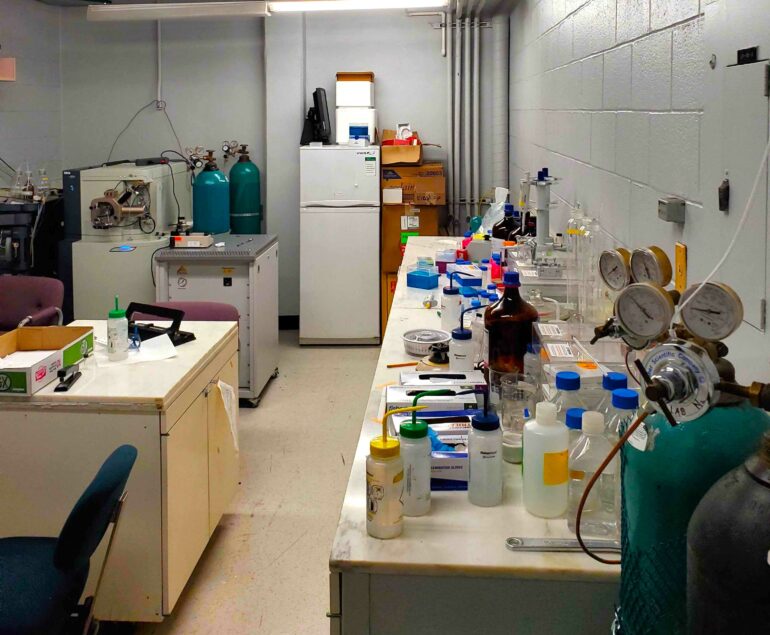If you have not yet heard of per- and poly-fluoroalkyl substances (PFAS) it’s time to get up to speed. PFAS, also known as “forever chemicals,” are a broad family of chemicals that have a strong persistence in the environment. Aptly nicknamed, these substances will remain in the environment forever, never to biodegrade. These toxic chemicals are used in a variety of industries and products. The most common PFAS are perfluorooctanoic acid (PFOA) and perfluorooctanesulfonate (PFOS). These chemicals are so potent that acceptable exposure levels are measured in parts per trillion.
To help you understand more about these potent chemicals, where they are found, and how they can be removed from your environment, Rader Environmental Services has compiled a list of commonly asked questions and responses about PFAS.
Question: Where can one find PFAS?
Answer: Nearly 400 contamination sites have been identified in the United States alone. The PFAS research team at Northeastern University has created a PFAS Contamination Site Tracker listing contamination sites across the United States, along with information about the sites. More than half of the sites are military bases. As a result, the U.S. Department of Defense has spotlighted the need to find solutions to this contamination problem.
The primary source of contamination seems to be from the release of firefighting foam, which is responsible for approximately 69% of all contamination sites currently identified by Northeastern University. The next largest source is manufacturing facilities where metal and plastic plating occurred, accounting for approximately 6% of the contamination sites. Other sources of contamination include carpet and fabric coating manufacturers, leather tanneries and paper-product manufacturers. DuPont and 3M production sources combined accounted for roughly 4% of the contamination sources.

Q: What are the health effects, and how are people exposed?
A: A recent study by the U.S. Department of Health and Human Services estimates more than 60 million U.S. residents have been exposed to unacceptable levels of these toxic substances. Some experts suspect the number of exposed persons to be even higher.
Studies on the health effects of PFAS are limited and scientists are still learning about the effects of overexposure. However, some studies indicate that they may interfere with the body’s hormones, cholesterol levels and immune system. It could also increase the risk of developing cancer.
According to the Agency for Toxic Substances and Disease Registry (ATSDR), exposure to PFAS can occur in several ways, including:
- Drinking PFAS-contaminated municipal or well water
- Eating food from contaminated water or soil
- Eating food packaged in material that contains PFAS
- Ingestion of contaminated dust
- Using PFAS-containing products

While research suggests that exposure to PFAs from consumer products is relatively low, these chemicals can be found in many commonly used products, including:
- Grease-resistant paper, fast-food containers/wrappers, microwave popcorn bags, pizza boxes and candy wrappers
- Non-stick cookware
- Stain-resistant coatings used on carpets, upholstery and other fabrics
- Water-resistant clothing
- Cleaning products
- Personal care products (shampoo, dental floss) and cosmetics (nail polish, eye makeup)
Although PFAS has been banned in many U.S. manufacturing processes, components manufactured abroad or regenerated using recycled materials may contain these chemicals. Exposure to babies can occur during pregnancy and breastfeeding if the mother has been exposed to PFAS. Individuals directly involved in PFAS manufacturing can also be exposed via inhalation, accidental ingestion or skin contact.

Q: What legislative and regulatory actions are being taken to address this problem?
Timeline
A: In December 2019, 14 new PFAS were added to the Toxic Release Inventory (TRI) monitoring and reporting program as part of the Emergency Planning and Community Right-to-Know Act. Regulated businesses will be required to monitor these substances, and begin annual reporting by July 1, 2021. The EPA is also considering adding yet additional PFAS to the list of toxic chemicals subject to TRI reporting. The public comment period on the proposed additions closed on February 3.
On January 13, 2020, the House of Representatives approved the PFAS Action Act of 2019 (H.R. 535). If passed, the act would require the EPA to designate certain PFAS (PFOA and PFOS) as hazardous substances within one year, and possibly all of these chemicals within five years. However, H.R. 535 is likely to face significant hurdles in the Senate.
In July 2019, 22 state attorneys general sent a letter to Congress urging that contamination be addressed. Rep. Frank Pallone, chair of the House Energy and Commerce Committee, has prioritized PFAS for investigation this year.

In February 2019, the EPA issued a federal PFAS Action Plan to address drinking water, monitoring and research activities, enforcement, cleanup, risk communications, and toxic evaluations. Under the plan, the EPA has issued “lifetime health advisory” standards of 70 parts per trillion, measured in nanograms per liter (ng/l) for both PFOA and PFOS. Fulfilling part of its plan, the EPA released PFAS groundwater guidance for federal clean-up programs.
Q: What’s happening on the state level?
A: Individual states are also taking action to regulate these substances. The Ohio EPA issued it’s own PFAS Action Plan for Drinking Water in December 2019. The Ohio plan calls for a comprehensive sampling of 1,500 public water systems for contamination by the end of 2020. The results of the effort will provide significant information about the extent of PFAS in public water systems and will guide potential remediation actions. Other states including New Hampshire, New Jersey, Vermont, Massachusetts, Delaware, Michigan, Montana, New Hampshire, Rhode Island, Colorado, Alaska, Maine, and Texas have started regulating PFAS in drinking water, groundwater, and consumer products.
Q: What legal actions are taking place in response to contamination?
A: We have already seen a number of legal actions in the United States related to contamination. In Giovanni v. United States Department of the Navy, brought under Pennsylvania’s Hazardous Site Cleanup Act (HSCA), the District Court for the Eastern District of Pennsylvania found that the HSCA did not regulate either PFOS or PFOA. Pennsylvania state regulators are currently considering legislation to provide relief to individuals exposed to these chemicals.
In a recent consent decree filed in the United States District Court for the Western District of Michigan, Wolverine World Wide, Inc. agreed to pay up to $69.5 million in connection to contamination found in drinking water in Michigan’s townships of Plainfield and Algoma.
There have also been international legal proceedings such as the planned class action of 500 landowners against the Australian Federal Government in connection with PFAS-containing firefighting foam chemicals used at RAAF Pearce airbase.

Outlook: Is PFAS here to stay?
Outlook
Due to their strong chemical makeup and inability to biodegrade, the PFAS debate will remain front and center with environmentalists, the EPA, the Department of Defense and myriad state legislatures. As legislative action continues, we will see stricter standards for shipping, handling and disposing of PFAS by the EPA, the Department of Transportation, state agencies and hazardous waste disposal facilities nationwide.





